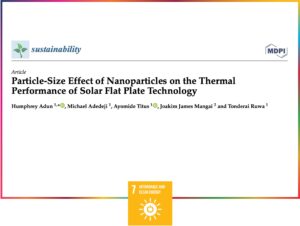
A study, featuring a co-author Mangai from Petroleum Engineering, Near East University, has delved into the impact of nanoparticle size on the thermal performance of solar flat plate collectors. The research, which focuses on silver (Ag) nanofluids with nanoparticle sizes ranging from 20 nm to 100 nm, aims to address a significant gap in understanding the efficiency of such collectors.
The study, conducted through numerical analysis, has yielded insightful findings regarding the relationship between nanoparticle size and collector performance. Among the key observations, it was noted that the Ag-100 nm nanofluid exhibited the highest mean fluid temperature, while the Ag-20 nm variant demonstrated slightly lower temperatures but higher useful heat and energy efficiency.
Furthermore, the research highlighted the diverse effects of nanoparticle size on parameters such as pressure drop, pump work, and environmental consequences. These findings underscore the importance of considering nanoparticle size as a crucial factor in optimizing the efficiency of solar flat plate collectors.
This study emphasizes the institution’s commitment to interdisciplinary research and innovation in sustainable energy technologies. Collaborative efforts such as this contribute significantly to advancing our understanding of complex challenges in the field and paving the way for practical solutions.
More Information:
https://www.mdpi.com/2071-1050/15/6/5271